

How Lee Kum Kee Oyster Sauce Turned My Weeknight Stir-Fries Into Restaurant Classics (And the 3-Minute Trick You Need to Try)
Table of Contents
- Introduction: The Stir-Fry Struggle Was Real
- What Makes Lee Kum Kee Oyster Sauce the Gold Standard?
- How Did I Discover This Game-Changing Ingredient?
- The Restaurant-Quality Quest
- The Moment Everything Changed
- Why Is Lee Kum Kee Superior to Other Oyster Sauce Brands?
- Premium Oyster Sauce vs. Budget Options
- Lee Kum Kee vs. Panda Oyster Sauce Comparison
- What's the Secret 3-Minute Stir-Fry Trick?
- The Perfect Timing Method
- Why Traditional Methods Fall Short
- How to Use Oyster Sauce in Stir Fry Like a Pro?
- Essential Techniques
- Common Mistakes to Avoid
- What Are My Best Lee Kum Kee Oyster Sauce Recipes?
- Classic Restaurant-Style Dishes
- Creative Fusion Applications
- How Does Oyster Sauce vs Soy Sauce Compare?
- What About Vegan Oyster Sauce Substitutes?
- Where to Source the Best Oyster Sauce?
- Frequently Asked Questions
- Conclusion: Transform Your Weeknight Cooking Forever
Introduction: The Stir-Fry Struggle Was Real
For months, I battled the same frustrating problem that plagues countless home cooks: my stir-fries tasted good, but they never achieved that rich, complex depth I craved from my favorite Chinese restaurants. Despite following recipes meticulously, using fresh ingredients, and mastering high-heat wok cooking, something essential was always missing from my weeknight meals.
The breakthrough came through a single bottle of Lee Kum Kee oyster sauce that transformed my entire approach to stir-fry cooking. This wasn't just about adding another condiment to my pantry, it was discovering the secret ingredient that professional chefs use to create that distinctive umami-rich flavor that makes restaurant dishes so addictive and memorable.
What started as a simple experiment with premium oyster sauce evolved into a complete revolution in my kitchen. Today, I'll share not only how Lee Kum Kee oyster sauce changed my cooking, but also the game-changing 3-minute technique that guarantees restaurant-quality results every single time you cook at home.
What Makes Lee Kum Kee Oyster Sauce the Gold Standard?
Lee Kum Kee oyster sauce represents over 130 years of sauce-making expertise, establishing itself as the best oyster sauce through consistent quality, authentic flavor, and professional-grade performance. Founded in 1888 in Nanshui, China, Lee Kum Kee accidentally created the first oyster sauce when founder Lee Kum Sheung forgot a pot of oyster soup on the stove, discovering the rich, concentrated sauce that remained.
What distinguishes Lee Kum Kee oyster sauce from competitors is its commitment to using real oyster extracts rather than artificial flavoring. The premium oyster sauce contains actual oyster essence that provides authentic umami depth impossible to replicate with synthetic ingredients. This authenticity explains why professional kitchens worldwide choose Lee Kum Kee as their standard oyster sauce for consistent, superior results.
The manufacturing process involves slow-cooking fresh oysters until their natural juices concentrate into a rich, flavorful base. This base is then blended with carefully selected seasonings, sugar, and thickening agents to create the signature glossy, thick consistency that clings perfectly to stir-fried ingredients while delivering maximum flavor impact.
- Authentic oyster extract: Real oyster essence provides genuine umami that artificial flavors cannot match
- Consistent quality: Professional-grade manufacturing ensures reliable results across all batches and applications
- Perfect consistency: Ideal thickness for coating ingredients without overwhelming or pooling at pan bottom
- Balanced flavor: Sweet, salty, and umami elements harmonize perfectly for versatile cooking applications
How Did I Discover This Game-Changing Ingredient?
The Restaurant-Quality Quest
My journey to discovering Lee Kum Kee oyster sauce began with persistent dissatisfaction with my home-cooked Chinese food. Despite investing in proper woks, studying technique videos, and sourcing fresh ingredients from Asian markets, my stir-fries consistently fell short of restaurant quality. The flavors were good but lacked the complex depth and glossy finish that made restaurant dishes so appealing.
I tried numerous approaches to bridge this gap: different oil combinations, various seasoning blends, and multiple cooking techniques. While these experiments improved my basic skills, they never addressed the fundamental flavor difference between my home cooking and professional restaurant preparations. The missing element wasn't technique—it was ingredients.
The frustration peaked during a dinner party where I attempted to recreate my favorite restaurant's beef and broccoli. Despite perfect execution of cooking technique, the dish tasted flat and one-dimensional compared to the restaurant version. Guests were polite, but I knew the difference was obvious to everyone who had tasted the authentic restaurant preparation.
- Technical proficiency: Mastered wok cooking, heat control, and ingredient preparation without achieving desired flavors
- Ingredient quality: Used fresh, high-quality components but still lacked authentic restaurant taste profiles
- Consistent disappointment: Multiple attempts and approaches failed to replicate professional kitchen results
- Social pressure: Entertaining guests highlighted the gap between home cooking and restaurant-quality expectations
The Moment Everything Changed
The breakthrough came during a casual conversation with my neighbor, who worked as a line cook at a popular Chinese restaurant. When I mentioned my stir-fry struggles, she immediately identified the problem: I wasn't using proper oyster sauce. She specifically recommended Lee Kum Kee oyster sauce, explaining that most restaurants use this brand because it delivers a consistent, authentic flavor that home cooks can't achieve with generic alternatives.
Skeptical but desperate for improvement, I purchased a bottle of premium oyster sauce from Lee Kum Kee and decided to recreate the same beef and broccoli that had previously disappointed. Following my neighbor's advice, I used the oyster sauce differently than I had used cheaper brands—adding it at the very end of cooking as a glaze rather than early as a seasoning base.
The transformation was immediate and dramatic. The dish suddenly possessed that elusive restaurant-quality depth, with glossy, rich flavors that coated every ingredient perfectly. The Lee Kum Kee oyster sauce didn't just season the food—it transformed it into something that genuinely rivaled professional kitchen preparations.
- Professional insight: Restaurant cook identified oyster sauce quality as the crucial missing element
- Brand recommendation: Specific endorsement of Lee Kum Kee oyster sauce based on professional kitchen experience
- Technique adjustment: Learned proper timing and application methods for maximum oyster sauce effectiveness
- Immediate results: First attempt using quality premium oyster sauce produced restaurant-level flavor transformation
Why Is Lee Kum Kee Superior to Other Oyster Sauce Brands?
Premium Oyster Sauce vs. Budget Options
Understanding the quality differences between premium oyster sauce and budget alternatives helps explain why Lee Kum Kee oyster sauce commands higher prices while delivering superior results. Budget oyster sauce brands often rely heavily on artificial flavoring, excessive thickeners, and minimal actual oyster content, creating products that provide basic seasoning without the complex flavor development that makes best oyster sauce so valuable.
Lee Kum Kee oyster sauce uses significantly higher percentages of real oyster extract, creating authentic umami depth that cannot be replicated through artificial means. The company's traditional slow-cooking process concentrates natural oyster flavors while developing complex taste compounds that emerge through proper fermentation and aging techniques.
The ingredient quality extends beyond oysters to include premium sugar, carefully selected salts, and natural thickening agents that create the ideal consistency for professional cooking applications. This attention to component quality ensures that Lee Kum Kee oyster sauce performs consistently across different cooking methods, temperatures, and ingredient combinations.
| Quality Factor | Lee Kum Kee Premium | Mid-Range Brands | Budget Options |
|---|---|---|---|
| Oyster Content | High percentage real extract | Moderate oyster content | Minimal actual oysters |
| Flavor Complexity | Rich, multi-layered umami | Decent but simpler taste | Often artificial or flat |
| Consistency | Perfect coating thickness | Variable texture quality | Often too thick or thin |
| Ingredient Quality | Premium components | Acceptable ingredients | Cost-cutting substitutions |
| Performance | Restaurant-grade results | Good for home cooking | Basic seasoning only |
- Ingredient authenticity: Premium oyster sauce uses real oyster extracts rather than artificial flavoring shortcuts
- Processing quality: Traditional methods develop complex flavors impossible to achieve through industrial shortcuts
- Professional performance: Best oyster sauce delivers consistent results across various cooking applications and conditions
- Value proposition: Higher quality justifies premium pricing through superior cooking results and versatility
Lee Kum Kee vs. Panda Oyster Sauce Comparison
Panda oyster sauce represents a popular mid-range alternative that many home cooks consider when seeking quality oyster sauce without premium pricing. While Panda oyster sauce offers decent flavor and consistency, direct comparison reveals why Lee Kum Kee oyster sauce maintains its position as the best oyster sauce for serious cooking applications.
Lee Kum Kee oyster sauce provides more complex flavor development through superior ingredient quality and traditional processing methods. The umami depth is more pronounced, the sweetness more balanced, and the overall flavor profile more sophisticated than Panda oyster sauce alternatives. This complexity becomes particularly apparent in dishes where oyster sauce serves as a primary flavoring component rather than just a background seasoning.
The consistency differences also impact cooking performance. Lee Kum Kee oyster sauce maintains ideal thickness across temperature ranges, coating ingredients evenly without becoming watery when heated or overly thick when cooled. Panda oyster sauce sometimes exhibits consistency variations that can affect cooking results, particularly in professional kitchen environments where reliability matters most.
- Flavor complexity: Lee Kum Kee oyster sauce offers more sophisticated taste development than Panda oyster sauce
- Consistency reliability: Superior texture performance across different cooking conditions and applications
- Ingredient quality: Premium components create more authentic and satisfying oyster sauce experience
- Professional preference: Restaurant kitchens consistently choose Lee Kum Kee for reliability and superior results
What's the Secret 3-Minute Stir-Fry Trick?
The Perfect Timing Method
The revolutionary 3-minute technique that transformed my stir-fry cooking centers on precise timing of Lee Kum Kee oyster sauce application combined with strategic ingredient sequencing. This method ensures that every component reaches optimal doneness while the oyster sauce provides maximum flavor impact without overcooking or losing its distinctive characteristics.
Minute 1: Protein Preparation
Heat your wok or large skillet over high heat with a small amount of oil. Add pre-cut proteins (chicken, beef, pork, or tofu) and sear quickly without moving them initially. This creates proper browning and seals in juices while beginning the cooking process. Remove proteins when 70% cooked and set aside—they'll finish cooking when returned to the pan.
Minute 2: Vegetable Sequence
Add aromatics like garlic and ginger to the hot pan, followed immediately by harder vegetables like carrots, broccoli stems, or bell peppers. Stir constantly to prevent burning while allowing vegetables to develop slight char and maintain crispness. Add softer vegetables like snow peas, bean sprouts, or leafy greens in the final 30 seconds of this phase.
Minute 3: The Magic Moment
Return proteins to the pan and immediately add Lee Kum Kee oyster sauce along with any additional seasonings. Stir everything vigorously for 60 seconds, allowing the premium oyster sauce to coat all ingredients while creating a glossy glaze. Remove from heat immediately to preserve texture and prevent overcooking.
- High-heat efficiency: Maximum temperature ensures proper searing and vegetable texture retention
- Sequence optimization: Strategic timing prevents overcooking while ensuring all components reach ideal doneness
- Sauce timing: Late oyster sauce addition preserves flavor intensity and creates optimal coating consistency
- Texture preservation: Rapid cooking maintains vegetable crispness while developing complex flavors
Why Traditional Methods Fall Short
Most home cooks add oyster sauce too early in the cooking process, which dilutes its flavor impact and can cause vegetables to become soggy or overcooked. Traditional stir-fry methods often involve longer cooking times that break down the oyster sauce components and reduce the glossy finish that makes restaurant dishes so visually appealing.
The 3-minute method concentrates flavor development while preserving ingredient integrity. By adding Lee Kum Kee oyster sauce at the optimal moment, it acts as a glaze that intensifies during the final cooking phase rather than cooking away during extended heat exposure. This technique is why restaurant kitchens can produce consistently superior results—they understand that oyster sauce performs best as a finishing element rather than a cooking base.
Temperature control becomes crucial for this technique's success. The high heat necessary for proper stir-frying can easily overcook premium oyster sauce if timing isn't precise. The 3-minute method ensures that ingredients receive adequate cooking while the oyster sauce maintains its intended flavor profile and consistency.
- Timing precision: Late sauce addition preserves oyster sauce flavor integrity and visual appeal
- Temperature management: High heat provides proper cooking without degrading sauce quality
- Texture optimization: Rapid cooking maintains ingredient textures while developing complex flavors
- Professional technique: Restaurant method adapted for home kitchen success with consistent results
How to Use Oyster Sauce in Stir Fry Like a Pro?
Essential Techniques
Mastering how to use oyster sauce in stir fry requires understanding both the sauce's characteristics and proper stir-fry fundamentals. Lee Kum Kee oyster sauce performs optimally when treated as a finishing glaze rather than a base seasoning, allowing its complex flavors to enhance rather than dominate the dish's overall profile.
Preparation becomes crucial for successful oyster sauce integration. All ingredients must be cut uniformly and arranged within easy reach before cooking begins. Oyster sauce should be measured and ready for immediate addition when needed. The high-heat, rapid-cooking nature of proper stir-frying leaves no time for ingredient preparation once cooking begins.
Wok or pan selection significantly impacts results when using Lee Kum Kee oyster sauce. Carbon steel woks provide optimal heat distribution and retention, while large skillets work adequately for home cooking. The key is achieving and maintaining high heat that allows proper searing and prevents ingredient steaming, which would dilute the oyster sauce effectiveness.
Oil selection and quantity affect how premium oyster sauce integrates with other ingredients. Use minimal amounts of high-smoke-point oils like peanut or avocado oil. Too much oil prevents proper oyster sauce adherence, while too little causes ingredients to stick and burn rather than sear properly.
- Preparation priority: Complete ingredient preparation before beginning cooking ensures smooth oyster sauce integration
- Equipment optimization: Proper cookware selection maximizes Lee Kum Kee oyster sauce performance and results
- Heat management: High-temperature cooking creates ideal conditions for oyster sauce flavor development
- Oil balance: Minimal oil usage allows optimal premium oyster sauce coating and flavor delivery
Common Mistakes to Avoid
The most frequent error when learning how to use oyster sauce in stir fry involves adding the sauce too early in the cooking process. When Lee Kum Kee oyster sauce is added before vegetables are properly cooked, it can burn, lose its glossy appearance, and develop bitter flavors that compromise the entire dish.
Overcrowding the pan represents another critical mistake that prevents proper oyster sauce integration. When ingredients are packed too densely, they steam rather than sear, creating excess moisture that dilutes the oyster sauce and prevents the development of proper textures and flavors that characterize restaurant-quality stir-fries.
Using insufficient heat fails to activate premium oyster sauce properly and prevents the caramelization that creates complex flavors. Oyster sauce requires high temperatures to develop its full potential, but many home cooks use moderate heat that produces mediocre results and fails to showcase the sauce's capabilities.
Measuring oyster sauce improperly can overwhelm or underwhelm dishes. Lee Kum Kee oyster sauce is concentrated and potent—typically 1-2 tablespoons per serving provides optimal flavor without overpowering other ingredients. Too much creates cloying sweetness, while too little fails to provide the desired umami enhancement.
- Timing errors: Early sauce addition compromises oyster sauce flavor and visual appeal
- Overcrowding problems: Excessive ingredients prevent proper cooking and sauce integration
- Heat insufficiency: Low temperatures fail to activate Lee Kum Kee oyster sauce properly
- Proportion mistakes: Incorrect amounts either overwhelm or underwhelm dish flavors
What Are My Best Lee Kum Kee Oyster Sauce Recipes?
Classic Restaurant-Style Dishes
Perfect Beef and Broccoli Stir-Fry:
This represents the dish that started my Lee Kum Kee oyster sauce journey and remains my most requested recipe. Thinly sliced beef gets a quick sear, followed by perfectly cooked broccoli florets, and finished with oyster sauce glaze that creates the authentic restaurant experience at home.
Ingredients:
- 1 lb beef sirloin, sliced thin against grain
- 4 cups broccoli florets
- 3 cloves garlic, minced
- 2 tablespoons Lee Kum Kee oyster sauce
- 1 tablespoon soy sauce
- 1 teaspoon cornstarch
- 2 tablespoons oil
The key to success lies in high heat and proper sequencing. Sear beef first until 70% cooked, remove, then cook broccoli until tender-crisp. Return beef to pan and add premium oyster sauce mixture, stirring rapidly for perfect coating and glaze development.
Classic Chicken and Vegetable Stir-Fry:
This versatile oyster sauce recipe adapts to seasonal vegetables while maintaining consistent, restaurant-quality results. Lee Kum Kee oyster sauce provides the flavor foundation that unifies diverse vegetables into a cohesive, satisfying dish.
Technique Focus:
The 3-minute method works perfectly here. Chicken pieces sear for maximum flavor, vegetables cook in sequence based on required cooking times, and oyster sauce application at the end creates the glossy, flavorful coating that defines professional stir-fry preparation.
- Beef and broccoli: Classic combination showcasing Lee Kum Kee oyster sauce at its finest
- Chicken versatility: Adaptable recipe that works with various seasonal vegetables
- Technique consistency: Same 3-minute method applies across different protein and vegetable combinations
- Restaurant quality: Professional results achievable in home kitchens with proper oyster sauce application
Creative Fusion Applications
Oyster Sauce Fried Rice:
Transforming leftover rice into restaurant-quality fried rice becomes simple with Lee Kum Kee oyster sauce. The sauce provides umami depth that elevates simple ingredients while creating the glossy appearance that makes fried rice visually appealing and professionally presented.
Innovation Approach:
Instead of using oyster sauce as just seasoning, create a glaze by mixing it with a small amount of chicken stock. This technique allows the sauce to coat rice grains evenly while providing moisture and flavor without creating heavy or greasy results.
Oyster Sauce Noodle Bowls:
Fresh or dried noodles combined with vegetables and protein create satisfying meals when finished with premium oyster sauce. This application demonstrates the sauce's versatility beyond traditional stir-fry preparation while maintaining authentic Asian flavors.
Vegetarian Applications:
Even without meat, Lee Kum Kee oyster sauce enhances vegetable dishes dramatically. Mushroom and tofu combinations particularly benefit from the umami enhancement, creating satisfying plant-based meals that don't feel like compromises.
- Rice transformation: Oyster sauce elevates simple fried rice to restaurant standards
- Noodle versatility: Various noodle types work with Lee Kum Kee oyster sauce applications
- Vegetarian options: Plant-based proteins benefit significantly from oyster sauce umami enhancement
- Creative applications: Traditional sauce adapts well to contemporary fusion cooking approaches
How Does Oyster Sauce vs Soy Sauce Compare?
Understanding oyster sauce vs soy sauce differences helps home cooks use each condiment optimally rather than treating them as interchangeable seasonings. While both provide umami enhancement, their flavor profiles, consistency, and optimal applications differ significantly enough that successful Asian cooking requires understanding when to use each sauce.
Soy sauce provides primarily salty, fermented flavors with light consistency that penetrates ingredients easily. It works best as a marinade base, seasoning foundation, or light finishing touch that adds color and saltiness without significantly altering dish texture or appearance.
Lee Kum Kee oyster sauce offers sweet-savory balance with thick consistency that coats ingredients and creates glossy finishes. It functions best as a glaze, primary flavoring component, or sauce base that provides both taste and visual appeal through its coating properties.
The combination of both sauces often produces superior results than using either alone. Soy sauce provides the salty foundation while oyster sauce adds sweetness, thickness, and umami complexity. Professional kitchens frequently use this combination to create layered flavor profiles impossible to achieve with single sauce applications.
| Characteristic | Oyster Sauce | Soy Sauce |
|---|---|---|
| Consistency | Thick, coating | Thin, penetrating |
| Flavor Profile | Sweet-savory umami | Salty, fermented |
| Best Applications | Glazes, stir-fries, coating | Marinades, seasoning, finishing |
| Visual Impact | Glossy, rich appearance | Color enhancement |
| Cooking Behavior | Caramelizes, thickens | Penetrates, seasons |
- Complementary functions: Oyster sauce vs soy sauce comparison reveals different optimal applications
- Combination benefits: Using both sauces creates more complex flavor profiles than either alone
- Texture differences: Thick vs. thin consistency affects how each sauce integrates with ingredients
- Professional usage: Restaurant kitchens use both sauces strategically for optimal results
What About Vegan Oyster Sauce Substitutes?
The growing demand for plant-based alternatives has led to excellent vegan oyster sauce substitute options that provide similar umami enhancement without animal products. Understanding these alternatives helps accommodate dietary restrictions while maintaining authentic Asian flavors in vegetarian and vegan cooking applications.
Mushroom-based substitutes represent the most successful vegan oyster sauce substitute category. Shiitake, oyster mushroom, or mixed mushroom sauces provide natural umami through glutamates present in fungi. These alternatives offer similar thickness and coating properties to traditional oyster sauce while remaining completely plant-based.
Seaweed-based alternatives utilize kombu or other sea vegetables to create umami depth reminiscent of seafood flavors. These vegan oyster sauce substitute options work particularly well in dishes where oceanic flavors complement other ingredients, though they may taste different from traditional Lee Kum Kee oyster sauce.
Commercial vegan alternatives from established brands provide convenience and consistency for regular use. Several companies now produce vegan oyster sauce substitute products specifically designed to replicate traditional oyster sauce characteristics while maintaining plant-based credentials.
DIY Vegan Oyster Sauce Recipe:
- 1 cup vegetable broth
- 2 tablespoons soy sauce
- 1 tablespoon brown sugar
- 1 teaspoon mushroom powder
- 1 tablespoon cornstarch mixed with water
Simmer ingredients until thickened, creating homemade vegan oyster sauce substitute that works well in most oyster sauce recipe applications.
- Mushroom alternatives: Fungi provide natural umami that closely replicates oyster sauce characteristics
- Seaweed options: Marine vegetables offer oceanic flavors suitable for specific applications
- Commercial products: Manufactured vegan oyster sauce substitute options provide convenience and consistency
- Homemade solutions: DIY alternatives allow complete control over ingredients and flavor profiles
Where to Source the Best Oyster Sauce?
Finding authentic Lee Kum Kee oyster sauce and other premium oyster sauce options requires understanding where quality products are typically available and how to identify genuine products versus inferior imitations. Proper sourcing ensures optimal cooking results and value for investment in quality ingredients.
Asian grocery stores typically offer the widest selection of oyster sauce brands and varieties, including different Lee Kum Kee oyster sauce formulations for various applications. These specialized retailers often stock both premium and budget options, allowing comparison shopping and access to authentic imported products.
Online retailers provide convenient access to best oyster sauce options with home delivery, though shipping costs and product handling require consideration. Reputable online Asian grocery platforms often offer better prices and selection than general retailers while ensuring product authenticity.
Mainstream supermarkets increasingly carry Lee Kum Kee oyster sauce in their international sections, though selection may be limited compared to specialized retailers. Quality and freshness can vary depending on store turnover and storage conditions.
Restaurant supply stores sometimes sell premium oyster sauce in larger quantities suitable for frequent home cooking or small-scale food service. These sources often provide professional-grade products at competitive prices for serious home cooks.
- Specialty stores: Asian markets provide best selection and authentic oyster sauce options
- Online convenience: Internet retailers offer access to Lee Kum Kee oyster sauce with home delivery
- Mainstream availability: Regular supermarkets increasingly stock quality premium oyster sauce options
- Professional sources: Restaurant suppliers provide bulk best oyster sauce options for serious home cooks
Conclusion: Transform Your Weeknight Cooking Forever
The journey from frustrated home cook to confident stir-fry master began with a single bottle of Lee Kum Kee oyster sauce and the revolutionary 3-minute technique that unlocked restaurant-quality results in my own kitchen. What seemed like a simple condiment purchase transformed into a complete cooking evolution that changed how I approach weeknight meals and entertain guests.
Premium oyster sauce proves that quality ingredients make dramatic differences in cooking outcomes. The investment in authentic Lee Kum Kee oyster sauce pays dividends through consistently superior results, increased cooking confidence, and the satisfaction of creating restaurant-quality dishes that genuinely impress family and friends.
Share views on How Lee Kum Kee Oyster Sauce Turned My Weeknight Stir-Fries Into Restaurant Classics (And the 3-Minute Trick You Need to Try)
Please keep your views respectful and not include any anchors, promotional content or obscene words in them. Such comments will be definitely removed and your IP be blocked for future purpose.
FAQ on How Lee Kum Kee Oyster Sauce Turned My Weeknight Stir-Fries Into Restaurant Classics (And the 3-Minute Trick You Need to Try)
What makes Lee Kum Kee oyster sauce better than other brands?
Lee Kum Kee oyster sauce uses higher percentages of real oyster extract, traditional processing methods, and premium ingredients that create superior flavor complexity and consistency compared to budget alternatives. The brand's 130+ year history and professional kitchen adoption demonstrate its quality leadership.
How long does oyster sauce last after opening?
Premium oyster sauce typically maintains quality for 18-24 months when refrigerated after opening. Lee Kum Kee oyster sauce includes preservatives that extend shelf life while maintaining flavor integrity. Always check for changes in color, consistency, or smell before use.
Can I use oyster sauce in non-Asian recipes?
Oyster sauce works excellently as umami enhancement in various cuisines. Its sweet-savory profile complements barbecue glazes, salad dressings, and even some Western sauce applications. Start with small amounts to understand how it affects different flavor profiles.
What's the difference between light and dark oyster sauce?
Light oyster sauce offers more delicate flavor suitable for seafood and vegetables, while dark versions provide more intense taste ideal for red meats and hearty vegetables. Lee Kum Kee oyster sauce offers both varieties for different cooking applications.
How much oyster sauce should I use per serving?
Generally, 1-2 tablespoons of premium oyster sauce per serving provides optimal flavor without overwhelming dishes. Lee Kum Kee oyster sauce is concentrated, so start with smaller amounts and adjust based on taste preferences and dish requirements.
Is oyster sauce gluten-free?
Most oyster sauce brands contain soy sauce, which typically includes wheat. Lee Kum Kee produces gluten-free versions labeled specifically for dietary restrictions. Always check ingredient labels if gluten sensitivity is a concern.
Can I substitute oyster sauce for soy sauce?
Oyster sauce vs soy sauce comparison shows they serve different functions. Oyster sauce is thicker and sweeter, working better as glaze, while soy sauce provides saltiness and penetration. They complement rather than replace each other in most applications.
What vegetables work best with oyster sauce?
Lee Kum Kee oyster sauce enhances virtually all vegetables, particularly broccoli, bok choy, snow peas, mushrooms, and bell peppers. The sauce's umami depth complements vegetable natural flavors without masking their individual characteristics.
Should oyster sauce be refrigerated?
Premium oyster sauce should be refrigerated after opening to maintain flavor quality and prevent spoilage. Unopened bottles remain stable at room temperature, but refrigeration after opening extends usable life and preserves optimal taste.
Can I make oyster sauce at home?
Homemade oyster sauce requires fresh oysters, time for proper cooking and concentration, and careful seasoning balance. While possible, the complexity and time investment usually make quality commercial best oyster sauce more practical for regular cooking use.
Blog Categories
Blog Tags
 9th Sep 2025
9th Sep 2025
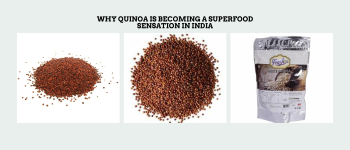 15th Oct 2024
15th Oct 2024
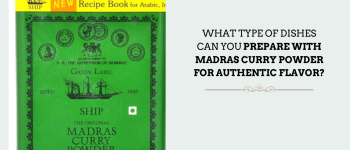 5th Dec 2024
5th Dec 2024
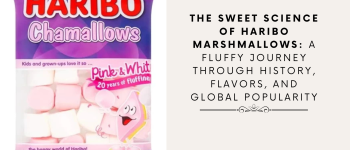 23rd Dec 2024
23rd Dec 2024
 9th Sep 2025
9th Sep 2025
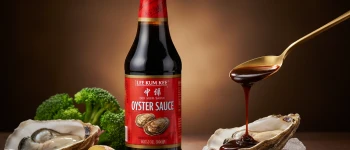 4th Oct 2025
4th Oct 2025
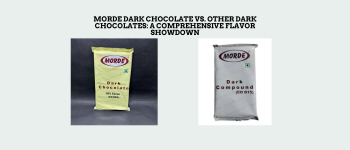 28th Nov 2024
28th Nov 2024
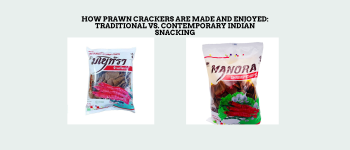 5th Aug 2025
5th Aug 2025
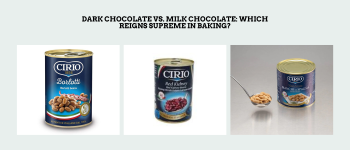 16th Oct 2024
16th Oct 2024
 10th Sep 2025
10th Sep 2025
 13th Oct 2025
13th Oct 2025
 13th Oct 2025
13th Oct 2025
 3rd Dec 2024
3rd Dec 2024
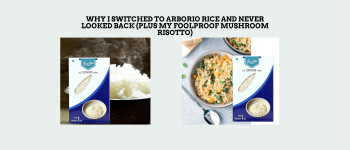 29th Aug 2025
29th Aug 2025
 13th Oct 2025
13th Oct 2025
